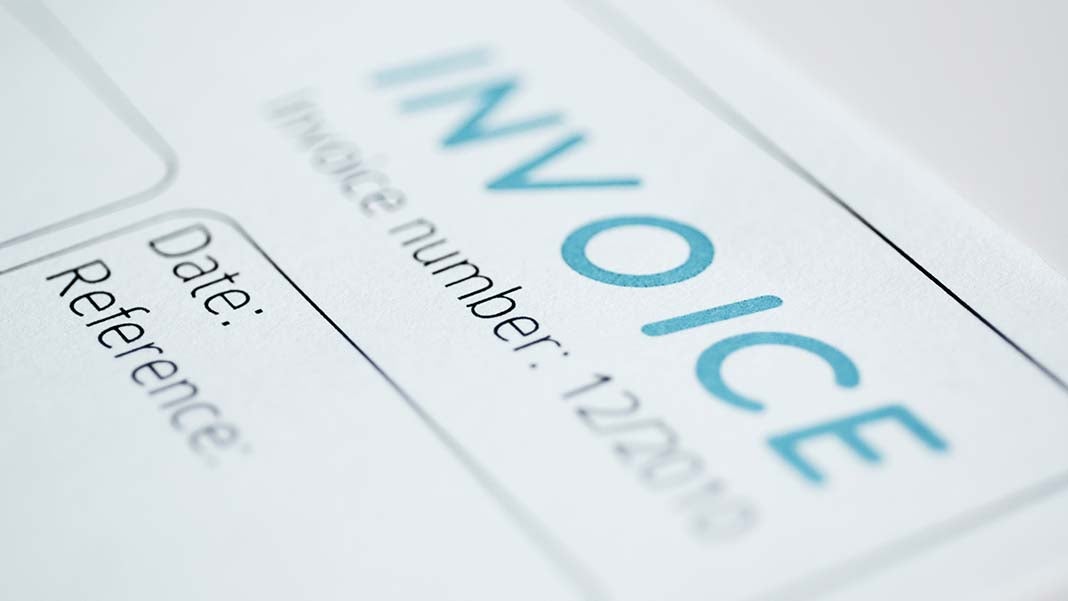
One area where most small-business owners can improve their cash flow is in billings and collections. A thorough credit check before you offer payment terms is not enough. Here are six best practices that can make a real difference in your cash balance at the end of every month.
1. Get it right.
One legitimate reason for nonpayment is a confusing or inaccurate invoice. Make sure your invoices spell out in clear, plain English what was purchased, the price, the payment terms (or when payment is due), the customer’s PO number, when it was shipped, to where it was shipped, and any tracking number.
You may also want to tighten your sales process. Don’t start work without a formal PO from your business customers-many companies won’t pay against a verbal PO. When you receive a PO, make sure that it matches your quotation. Companies often put their payment terms on their paperwork, so if your customer tries to play this game, resolve any discrepancies before you start work.
Related Article: Do You Make Receivables Harder to Collect?
Finally, make certain every shipment and invoice is 100% correct. Set up processes to assure the customer gets exactly what was ordered and that invoices are equally accurate.
2. Get it out.
See that four-day-old pile of shipping papers waiting to be invoiced? That’s a pile of cash you can’t collect.
Set a goal to issue all invoices within one working day of the ship date or completion of work. If your team struggles to meet this, give them the tools and/or manpower to make it happen. And if an invoice gets held up internally, make sure your supervision is immediately notified so the problem can be quickly resolved.
To further speed payments, try to invoice your customers by email. Some won’t accept emailed invoices, but getting even a portion of your billing done electronically will help overall cash flow.
3. Get it to the right person.
How many times has one of your employees called about a past-due payment and been told “we didn’t receive your invoice” or “that needs to be approved by the department manager”? It’s another game, one that can take weeks to play out. As part of getting an accurate customer PO, make sure your sales staff gets a valid address for invoicing.
Large sales deserve special attention. Where applicable, have your salesperson get the contact information for the customer employee that will approve payment. This might be a department or plant manager and maybe even the business owner. Also get the contact information for the customer’s finance-side people (accounting manager, accounts payable clerk), who will cut and approve the check. When your invoice goes out, make sure they all get a copy.
4. Get it sooner.
Offer a discount for early payment-for example, 2% off for payment within 10 days. Not all of your customers will take advantage of this, but it’s a great way to pull cash in.
5. Get friendly.
The best way to get paid on time is to build a positive working relationship with your customer before the money is due.
Have your salesperson call his or her customer contacts shortly after the invoice goes out. Confirm the product has been received or affirm that your assignment is now complete. Ask them if they’re satisfied with your work, what you can do better to improve, and if they’ve received your invoice. This communicates (in a nice way) that it’s time to start the payment process. If these calls uncover problems, it’s an opportunity to address them on the spot as opposed to when payment is past due.
Your employee responsible for collections should also make a call-in this case, to the customer’s finance-side people. Your employee should confirm the receipt of your invoice, remind them of any discounts for early payment, and check whether there are any administrative problems with the document. They should not ask for a payment date. If possible, they should also try to get to know their counterparts. A simple “How’s the weather where you are?” is a great opening that can lead to a long conversations about, well, everything. Your customer’s payables team can be your best friend later in the collections process, but it won’t happen if you have not built a working relationship.
There’s one other person who needs to get friendly: you, the business owner or general manager. As your company develops large customers make sure you get to know your customer counterparts. A phone call from you asking “How’s my team doing?” is a great way to initiate a conversation and assure customer satisfaction. For very large projects, make a face-to-face visit. It will pay off later. If the time comes when a payment problem needs to be escalated, you will have an established relationship on which to call.
6. Make it fun.
Some companies take the “get friendly” notion to the next level. From putting silly “Thank You!” notes on their invoices, to handing out promotional swag, to sending little stuffed animals for on-time payment, it’s amazing how these goofy gimmicks can change the atmosphere around the collection process.
You want your customer to smile and shake his head as he signs the check to pay your bill. And if the day comes when your customer needs to decide whom to pay and whom to put off, chances are he will pay you first.
In Closing
What about the actual collections process? Good companies contact their customers if a payment is more than five working days late. You should do the same.
What’s different is that you’ve laid the foundation for a successful endgame. Any excuses for non-payment have been addressed. Your people know whom to call, and you have working contacts who will give you straight answers. Above all, you’ve strengthened the relationship with your customer and have built a basis for future business.
Original Post By: Barry Fowler
Author: Barry Fowler is licensed to represent taxpayers before the Internal Revenue Service (IRS) and is a longstanding member of several tax industry professional organizations including the National Association of Enrolled Agents (NAEA), National Association of Tax Preparers (NATP), Texas Society of Enrolled Agents (TSEA), and the American Society of Tax Problem Solvers (ASTPS). With experience in the tax and finance industry spanning over twenty years, Fowler’s expertise includes tax resolution, personal financial planning, tax return preparation, financial statements, and general ledger bookkeeping. He has been instrumental in helping hundreds of people resolve complex tax issues with the IRS.












